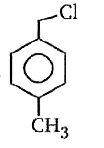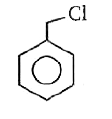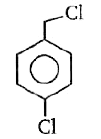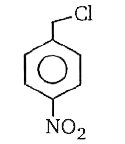A
B
C
D
Text Solution
AI Generated Solution
The correct Answer is:
|
Topper's Solved these Questions
HALOALKANES AND HALOARENES
NCERT FINGERTIPS ENGLISH|Exercise Higher order thinking skills|8 VideosView PlaylistHALOALKANES AND HALOARENES
NCERT FINGERTIPS ENGLISH|Exercise Exemplar problems|24 VideosView PlaylistHALOALKANES AND HALOARENES
NCERT FINGERTIPS ENGLISH|Exercise Physical properties|7 VideosView PlaylistGENERAL PRINCIPLES AND PROCESSES OF ISOLATION OF ELEMENTS
NCERT FINGERTIPS ENGLISH|Exercise Assertion And Reason|15 VideosView PlaylistPOLYMERS
NCERT FINGERTIPS ENGLISH|Exercise NCERT Exemplar|9 VideosView Playlist
Similar Questions
Explore conceptually related problems
Knowledge Check
A
B
C
D
Submit
A
B
C
D
Submit
A
B
C
D
Submit
Similar Questions
Explore conceptually related problems
NCERT FINGERTIPS ENGLISH-HALOALKANES AND HALOARENES-Chemical reactions
- In the reaction given below: Which of the following statements is...
03:29
|
Play - Tertiary alkyl halide are practially inert to substitution by SN^(2) ...
01:37
|
Play - Among the choices of alkyl bromide , the least reactive bromide in a ...
02:11
|
Playing Now - Arrange the following compounds in order of their reactivity towards S...
02:05
|
Play - Which of the following haloalkanes is most reactive?
04:05
|
Play - Which of the following reactions does not take place?
06:32
|
Play - Consider the following bromides: The correct order of S(N^1) reac...
07:30
|
Play - Which of the following statement regarding S(N)1 reaction shown by alk...
03:50
|
Play - Consider the following reaction: C6H5-underset(H)underset(|)overset(...
03:17
|
Play - Which one of the following chlorohydrocarbons readily undergoes solvol...
01:50
|
Play - Which of the following is the most reactive towards nucleophilic subst...
03:47
|
Play - S(N^1) reaction is fastest in
02:10
|
Play - Which of the following alkyl halides is hydrolysed by S(N^(1)) mechani...
04:54
|
Play - Which of the following will give enantiomeric pair on reaction with wa...
07:42
|
Play - Which of the following is most reactive towards aqueous NaOH?
06:22
|
Play - In the following pairs of halogen compounds, which compounds undergoes...
03:37
|
Play - Which of the following haloalkanes reacts with aqueous KOH most easily...
02:45
|
Play - Which alkyl halide exhibits complete racemisation in S(N^1) reaction?
08:14
|
Play - The order of reactivity of various alkyl halides towards nucleophilic ...
02:57
|
Play - Alkyl halides are formed when thionyl chloride and are refluxed in pr...
02:48
|
Play




